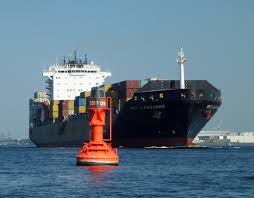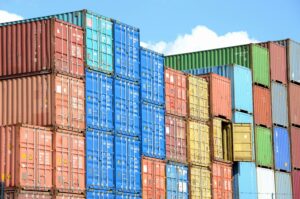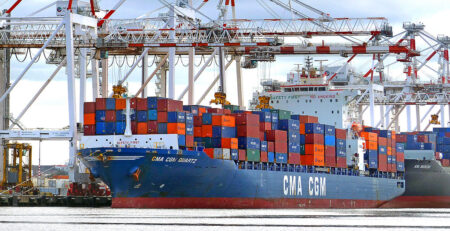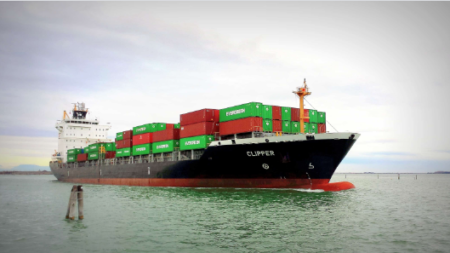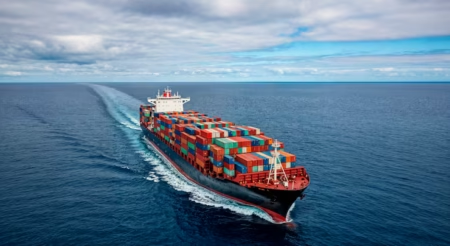Recent GST reforms and government initiatives are transforming India’s maritime and multimodal logistics, reducing costs, encouraging private investment, and promoting sustainable supply chains, enhancing competitiveness for exporters, importers, and the broader trade ecosystem.

Simplified GST incentivises multimodal transport, reducing dependency on congested highways.
India’s untapped coastal potential
With a coastline of 7,500 km and over 14,500 km of navigable inland waterways, India possesses immense, largely untapped potential to develop efficient supply chain linkages through its 12 major and more than 200 non-major ports. Currently, around 95% of India’s trade volumes are handled through the sea. The Government of India has undertaken several initiatives to promote coastal shipping and improve ease of doing business, including upgrading port and terminal facilities to global standards, developing inland waterways, addressing bottlenecks in road and rail connectivity, and constructing multimodal logistics hubs.
Global supply chain vulnerabilities
Global supply chains are increasingly exposed to disruptions, impacting manufacturing, trade logistics, and related investments. International transportation, particularly maritime shipping, is a key contributor, with freight rate volatility and tariff wars creating vulnerabilities across the supply chain. In this context, recent reforms under the GST regime, effective from 22nd September 2025, have significant implications for domestic logistics and trade competitiveness.
GST reforms level the rail freight playing field
Transport of goods in containers by rail, other than through Indian Railways, has seen GST reduced from 12% to 5%. Private rail concessionaires are now charged only 5% GST for multimodal contracts. Previously, Indian Railways freight enjoyed a concessional GST of 5% (with input tax credit restrictions), while private operators were taxed at 12%, creating a pricing distortion that discouraged their use and pushed cargo either to Indian Railways or road transport. The reduction to 5% now places private operators on equal footing with Indian Railways, enhancing competitiveness and allowing shippers to choose based on service quality, reliability, and network reach rather than tax differences.
For exporters and importers using Inland Container Depots in northern and central India, this change translates to lower logistics costs. Reduced costs under multimodal contracts encourage integrated logistics solutions that combine rail, road, and port services under a single operator, reducing dependence on road transport.
Boosting private rail investments
Private rail operators gain improved financial viability to expand operations and invest in more Inland Container Depots, Private Freight Terminals, and Multimodal Logistics Parks, strengthening India’s logistics backbone. Increased rail freight movement supports a modal shift away from congested highways, lowering road maintenance requirements, fuel imports, and overall carbon emissions. While the government may face a small short-term revenue loss due to lower GST, higher freight volumes, improved trade competitiveness, and greater private investment in infrastructure are expected to offset this over time. Reducing GST for private container train operators eliminates a long-standing distortion, lowers logistics costs, encourages multimodal transport, and aligns with the National Logistics Policy’s goal of bringing India’s logistics costs closer to global benchmarks.
Making coastal shipping competitive
In coastal shipping, the earlier multi-tier GST structure caused ambiguity, with different rates applying to freight, vessel leasing, and port handling. Prior to the recent reforms, these services were taxed at 18%, part of a broader tiered GST system (5%, 12%, 18%, 28%, and 40%), making maritime transport more expensive relative to other modes. Following the 56th GST Council meeting on 3rd September 2025, a simplified two-tier GST system was implemented from 22nd September 2025. Under this, coastal and inland shipping services now attract 5% GST for merit-based transport services and 18% for standard services. This reduction lowers the cost of maritime transport, makes it more competitive compared to road and rail, and encourages a modal shift from highways to sea routes, promoting sustainable logistics practices.
Financial and operational advantages
Lower GST eases cash flow constraints for logistics operators, allowing more competitive pricing, investment in modern vessels and cargo handling equipment, and faster turnaround times. Improved input tax credit provisions enable port operators and logistics companies to offset taxes paid on inputs against output tax liabilities, leading to cost savings and increased investment in port infrastructure and services. Overall, these reforms enhance the efficiency and competitiveness of India’s maritime trade, reduce domestic logistics costs, and strengthen the integration of multimodal supply chains, benefiting both exporters and importers.
Stat Boxes
India’s Maritime Profile
- Coastline: 7,500 km
- Navigable inland waterways: 14,500+ km
- Major Ports: 12
- Non-Major Ports: 200+
- Trade handled through sea: ~95%
GST Reforms – Rail Freight
- Private rail container transport: GST reduced from 12% → 5%
- Multimodal contract GST: 5% for private operators
- Previous distortion: Private 12% vs Indian Railways 5%
GST Reforms – Coastal Shipping
- Pre-reform tiered GST: 5%, 12%, 18%, 28%, 40%
- Post-reform: 5% (merit-based) / 18% (standard)
- Benefits: Lower cost, modal shift to sea, sustainable logistics


